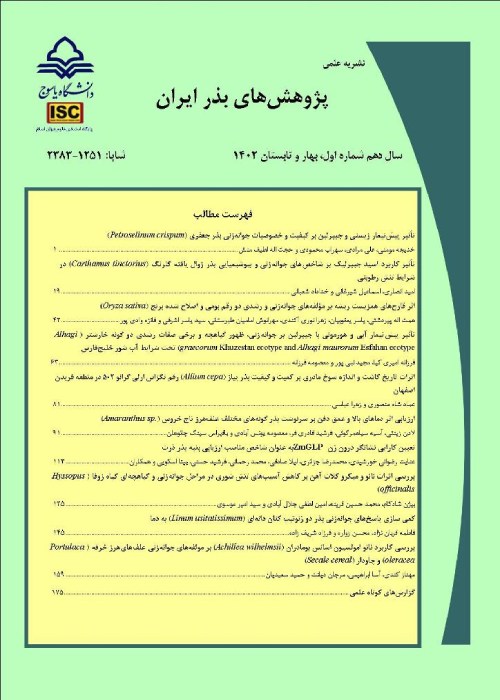Evaluating the initial growth of soybean (Glycine max) seedlings in response to different concentrations of copper compounds in the maternal plant
The use of nanotechnology is increasing in many fields including agricultural sciences. Concurrently, the release of these particles into the environment is inevitable, which may have adverse effects on plants. Therefore, it is important to understand the interactions between nanoparticles and crops as an essential component of all agricultural ecosystems. In this regard, a study was conducted on the effects of nanoparticles on germination potential and initial growth of F2 seeds by cultivating soybean in soil containing copper oxide nanoparticles.
To evaluate the nourishment effects of maternal soybean with copper compounds on its seedlings, two factorial experiments (in a growth chamber and pot) were conducted in a completely randomized design at the Faculty of Agriculture, Shahrekord University in 2021. Treatments in the maternal plant included different copper compounds (copper oxide nanoparticles with sizes of 25, 50 nm and copper chloride) and five concentrations of copper compounds (0, 50, 100, 200 and 500 mg/kg soil), and the seeds produced from these treatments were evaluated under controlled and pot conditions.
An increase in the concentration of copper chloride and copper oxide nanoparticle (25 nm) in maternal plants reduced the germination percentage (25 and 78%), radicle length (56 and 82%), radicle weight (35 and 81%), plumule length (19 and 71%), plumule weight (32 and 73%) and seedling vigor index (49 and 94%) of produced seeds, respectively. The evaluation of soybean seedlings nourished with different copper compounds also showed the nourishment with copper chloride and copper oxide nanoparticle (25 nm) significantly decreased the content of chlorophyll a (10 and 74%), chlorophyll b (38, 49%), carotenoids (136 and 145%), root length (27 and 61%), seedling height (31 and 58%), leaf area (44 and 64%), and shoot weight (34 and 64%) compared to the control, respectively.
In general, it is concluded that the toxicity of copper compounds in the rhizosphere of the maternal plant for the produced seeds is directly related to the concentration. Therefore, the toxic effects are intensified when the maternal plant is nourished with copper oxide nanoparticles, and the seeds produced under these conditions have poor vigor.
1. Nourishment of the maternal soybean plant with copper oxide nanoparticles reduces the seedling growth of the produced seeds.
2. Reducing the size of copper oxide nanoparticles has a more toxic effect on the germination of produced seeds.
3. The toxic effects of copper oxide nanoparticles continue until the seedling stage.
- حق عضویت دریافتی صرف حمایت از نشریات عضو و نگهداری، تکمیل و توسعه مگیران میشود.
- پرداخت حق اشتراک و دانلود مقالات اجازه بازنشر آن در سایر رسانههای چاپی و دیجیتال را به کاربر نمیدهد.



